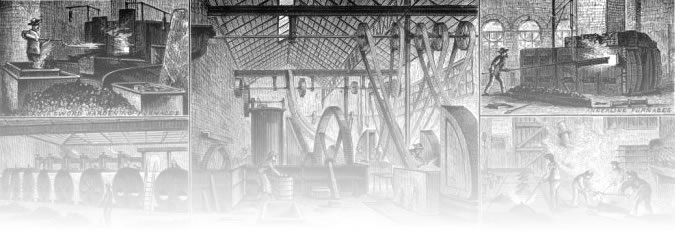- Tel: +44 (0) 208 305 0792
- FAX: +44 (0) 208 858 0101
- info@stoneleigh-eng.com

Valve History
Prior to Greek and Roman times, little is known about the methods used to control the flow of fluids. Some form of sluice gate was obviously used to hold and retain water in irrigation channels and we know there was some knowledge of the principles of flow because of the water clocks made by the early Egyptians.
The Greek and Roman periods saw the development of many mechanical and hydraulic machines and the first use of valves of sophisticated design. In the case of the plug cock valve, the design remained virtually unchanged until the 19th century.
Flap valves and coin valves were the forebears of the present swing and lift check valves and were used in the water force pumps. Bronze and brass plug cocks were in common use as stop valves on water mains and supply pipes to public and domestic buildings during the Roman period. A large bronze cock valve was found on Capri among the ruins of the Palace of Tiberius, built around AD25.
The early years of the 18th century marked the start of the Industrial Revolution and the arrival of the steam engine as a practical and commercial proposition. In 1698, Thomas Savery had patented his engine for the 'raising of water' and in 1705 Thomas Newcombe introduced his advanced version of Savery's engine, the atmospheric beam engine. James Watt provided the decisive step forward in the development of the steam engine when he patented the separate condenser in 1769.
During the Nineteenth Century, a number of eminent engineers directed their attention to valves, notably Timothy Hackworth, who introduced adjustable springs instead of weights to the steam safety valve. This valve is preserved in the Science Museum in London.
Another major innovation was the introduction of the groove-packed plug cock by Dewrance & Co. in 1875. This made the valve easier to operate and more suitable for use with steam. Historical note. George Hudd, late father of a senior Stoneleigh Engineering Director, worked at the Dewrance Great Dover Street Factory with distinction for over 45 years.
In 1886, Joseph Hopkinson introduced the parallel slide valve, in which the sealing of the valve was effected by the line pressure on the disc - a development which is still being manufactured today.
During the past 60 years, many other types of valves have been designed to cater for the new and hazardous processes which have been developed. Traditional valve types such as Gate and Globe valves have been reappraised as improvements have taken place in materials and the availability of new plastics and synthetic rubbers. This has also led to the development of the lubricated taper plug, diaphragm, ball and butterfly valves which have all been developed and engineered into practical and industrially acceptable products
.
The lubricated taper plug valve was developed during World War 1 by Sven Nordstrom, a Swedish engineer, who was trying to overcome the excessive leakage and sticking of ordinary plug valves. The diaphragm valve was developed by a South African engineer named Saunders, who, working in the gold mines, was faced with excessive leakage of compressed air at the glands of the valves being used. In 1929 he developed a valve using a diaphragm both to isolate the valve operating mechanism and also to act as the closing member, which proved a great success.
The ball, or spherical plug valve, is a relative newcomer to the valve family. Initially developed for fuel systems on aircraft during World War II, the valve was further developed in the post-war years to produce the first industrial range of ball valves. During the last 30 years, many valve manufacturers have directed their attention to the ball valve and a variety of new, improved designs have been introduced. This has led to a much wider diversification and expansion of the capabilities of the ball valve for duties in practically all sections of the valve market.
Reference had been made to James Watt, who made use of a butterfly valve in his steam engine, and the first Mercedes car built around 1901 introduced a butterfly valve in the fuel intake linked to the accelerator pedal. The first butterfly valves used metal-to-metal seats but, after World War II, improvements in modern synthetic rubbers for the sealing members extended the application of the butterfly valve into many industrial fields. In the last ten years, the butterfly valve has been developed further to handle much higher pressures and temperatures than previously envisaged. This design is known as the high performance butterfly valve.
Summary
The Industrial Revolution of the 18th and 19th centuries increased the pace of development of valves in terms of design and manufacture to meet the new demands from industry. These design have been fine-tuned in the latter half of the 20th century with the advent of more sophisticated manufacturing methods and the availability of more exotic materials capable of handling the extreme pressures and temperatures of the new and superior fluids which have been developed.


